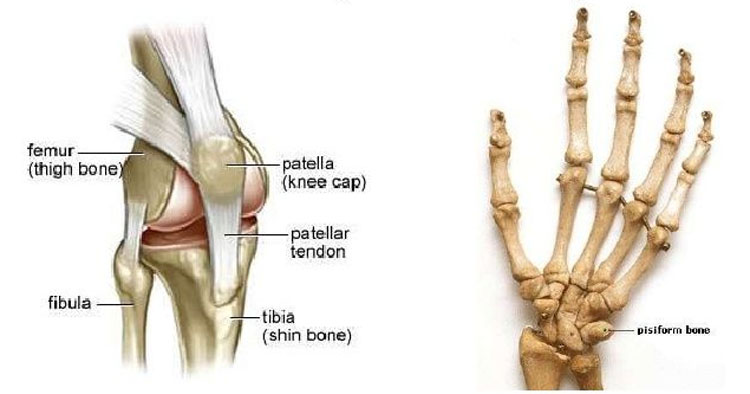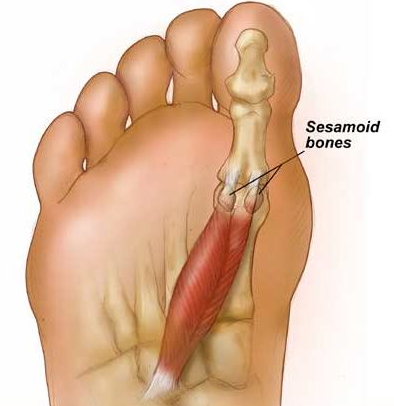Back and Joint Pain, Muscle Pain and Tendinopathy
Sesamoid Bones Unlike Other Bones
What Are Sesamoid Bones?
Most bones in the body connect to each other via joints however, sesamoid bones are unique in that they are not connected to any other bone and are in fact embedded in tendons. Sesamoid bones act as pulleys for the tendons they sit in, aiding movement and increasing the ability of the tendons the are embedded in to transmit the forces generated by the associated muscles. Basically creating a mechanical advantage for the body through their presence.
- The most easily recognisable (and also the largest) sesamoid in the body is your knee cap (patella), the knee cap bone is embedded in the quadriceps-patella tendon.
- Another smaller sesamoid bone called the “pisiform” in the wrist is one of the eight carpal bones, the pisiform is positioned on the little finger side of the wrist a little pea shaped bone embedded in the flexor carpi ulnaris tendon.
- Two more small sesamoid bones exist in the ball of the foot sitting just beneath the big toe joint as viewed in the image below and are positioned between the skin and the bones of the great toe lying within the tendon of flexor hallucis brevis. These sesamoids are also small pea shaped bones and sit side by side one another, where the medial one is closer to the other foot and the lateral sesamoid sits towards the outer side of the foot.
Can Sesamoid Bones Be Injured?
Like other bones, sesamoid bones are vulnerable to injury and can be bruised or break. The patella, pisiform and the sesamoids in the foot although all different and unique in their function and loading, can all break (fracture) or suffer bone bruising injuries. With regard to the sesamoid bones in the foot, these bones not only create a mechanical advantage for the flexor hallucis brevis muscle and tendon complex, they also serve as a weight bearing surface when walking and running. As a result they absorb a percentage of body weight placed on the ball of the foot during weight bearing activities and can therefore be injured if these loading forces are too high.
Sesamoiditis
Not only can they fracture, but the area around the sesamoid can also become inflammed/irritated. Irritation to the soft tissue engulfing the bone again due to a result of loading stress and changes can cause significant discomfort and is relatively common in the sesamoid bones of the foot. This irritation is typically referred to as sesamoiditis, sesamoiditis is considered a form of tendinitis and if frequently treated successfully with physiotherapy or podiatry treatment looking to off load the bones and alter biomechanics similar to an approach when looking to help someone suffering with tendinopathy. If you think you have sesamoiditis of the foot then contact your local Sydney physio or podiatrist to assess and assist in creating a treatment plan.
Disclaimer: Sydney Physio Clinic provides this information as an educational service and is not intended to serve as medical advice. Anyone seeking specific advice or assistance on Sesamoid Bones Unlike Other Bones should consult his or her physiotherapist, podiatrist or general practitioner.



